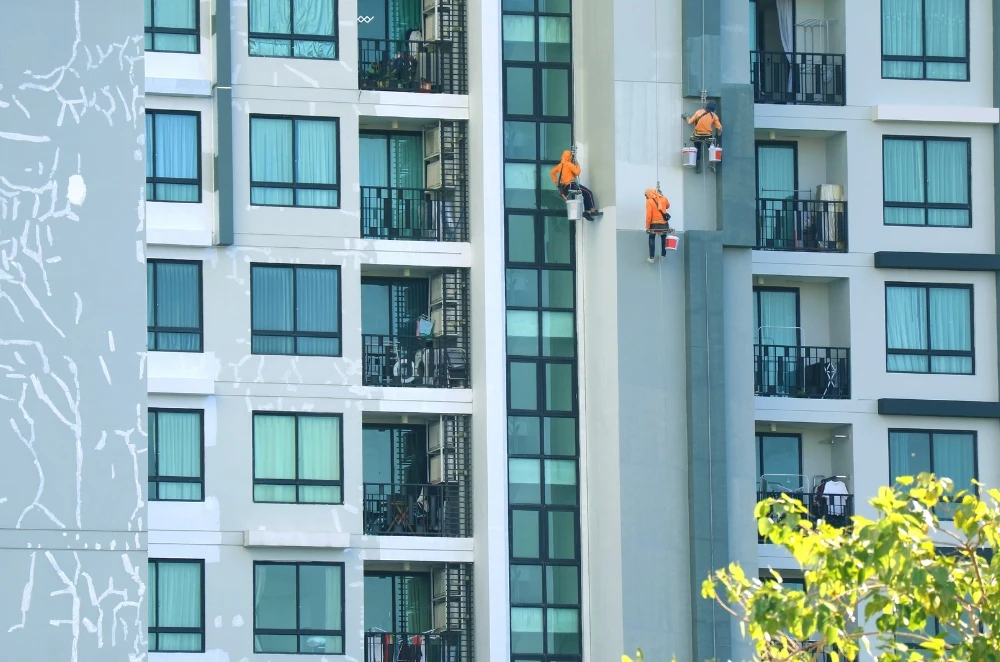In the world of property maintenance and commercial fit-outs, timing can make or break a project. Many businesses assume warmer months are best for painting, but experienced industrial painting contractors Sydney businesses rely on know that winter can often deliver better conditions for interior and even some exterior projects. Would argue otherwise. In fact, winter might just be the unsung hero of commercial paint season in Australia.
Sydney’s cooler, drier climate between June and August offers unexpected advantages for large-scale interior and exterior painting. While peak construction slows, painting crews gain more flexibility, and smart business owners seize the opportunity to refresh their premises without disrupting operations.
Why winter can be an ideal time to repaint
In Australia, winter isn’t extreme. Unlike regions where snow or sub-zero temperatures put outdoor work on hold, Sydney’s winters are relatively mild. For commercial painters, this opens a valuable window of opportunity, especially for interior jobs.
Here’s why winter works in favour of commercial painting projects:
- Less humidity means better drying and curing times
- Cooler temperatures reduce paint fume volatility
- Fewer UV rays lower the risk of sun damage during application
- Flexible scheduling due to seasonal downtime in other trades
Most importantly, buildings are often less occupied during winter months, especially in the retail and hospitality sectors. That makes it easier to block off areas, relocate staff temporarily, and complete projects without interfering with core operations.
Surface preparation and seasonal moisture
It’s a common misconception that winter brings too much moisture for exterior work. In truth, the lower humidity of Sydney’s winter can help painters prep and prime surfaces more efficiently, as long as rain is managed carefully.
Dew and condensation can affect early-morning work, but experienced painters adjust schedules accordingly, often starting later in the morning and finishing before dusk. This allows for:
- Dry surface prep before priming
- Reduced risk of blistering or peeling post-application
- Stronger adherence to metal and masonry facades
This level of planning — and adaptability — is what separates seasoned commercial painters from general contractors or DIY crews.
How seasonality impacts paint choice
Paint isn’t a one-size-fits-all product. The formulation matters, especially in colder months. Premium paints designed for low-temp application maintain flow and finish without compromising on coverage.
Painters will typically adjust their material selection in winter to ensure:
- Shorter recoat intervals
- Reduced solvent emissions
- Stable performance in fluctuating indoor/outdoor temperatures
By selecting temperature-tolerant paints and additives, professionals ensure consistency even in less-than-perfect weather.
The licencing and compliance layer
Whether painting a hospital, school, warehouse or strata block, proper licencing is essential. Painters operating in NSW are bound by strict guidelines around surface preparation, ventilation, product safety, and access equipment.
Working with painters who understand painting licence requirements in NSW ensures your project is protected — legally and operationally. It also guarantees that commercial properties meet WHS codes during and after the work.
Some of the credentials to expect from compliant contractors include:
- Contractor licence (specific to painting)
- Working at heights certification
- Environmental hazard management (e.g. lead paint, overspray)
- Safety Data Sheets (SDS) for all products used
It’s not just about getting the job done — it’s about meeting regulations that safeguard tenants, staff, and passers-by.
Real-world example: the winter repaint advantage
Last July, I coordinated a commercial refresh for a mid-sized accounting firm in Parramatta. Their office had high ceilings, large glass panels, and full-time staff on site — not ideal for a disruptive repaint. Originally, they considered postponing the job until summer.
But we opted for a winter schedule, and it paid off.
The painters started at 10am daily, when condensation had cleared, and wrapped up by 4pm. Thanks to low foot traffic during this quieter season, we staggered room closures and completed the entire repaint in under two weeks, without affecting workflow.
Staff returned each Monday to cleaner, brighter spaces, and the cooler air helped paint fumes dissipate quickly. What could’ve been a logistical headache in peak season became a smooth winter win.
Scheduling flexibility and contractor availability
One of winter’s biggest upsides is contractor availability. During warmer months, commercial painters are often booked out weeks in advance with exterior projects, school repaints, and industrial contracts.
Winter, however, opens the calendar.
This gives business owners the luxury of:
- Choosing ideal start dates
- Negotiating favourable rates
- Scheduling in phases to reduce disruption
- Combining interior and exterior touch-ups in one go
More availability also means less risk of delays — something crucial for projects tied to end-of-financial-year timelines or mid-year events.
Seasonal project planning tips
If you're planning a commercial repaint in winter, consider these guidelines:
- Ask about paint compatibility with winter conditions
- Ensure your contractor monitors surface temperatures and dew points
- Keep windows cracked or HVAC systems running for ventilation
- Use signage and barriers to cordon off areas without confusing staff or visitors
- Break work into zones to allow partial access during projects
Understanding the weather's impact on commercial painting helps align project scope with real-world timelines and reduces the risk of setbacks.
Why winter painting might actually save you money
While many think painting in peak season ensures quality, winter can be more cost-effective without compromising results. Contractor availability, lower demand, and cooler temperatures can lead to:
- Reduced overheads from idle staff or unused space
- Discounted bulk quotes
- Faster turnaround due to better drying conditions
- Less competition for high-demand painters
It also aligns with commercial budgeting cycles. Winter is often the perfect window to complete upgrades before Q3 planning or the holiday rush begins.
Choosing the right team this season
Winter painting success hinges on choosing professionals who understand the unique conditions and timelines. It’s not just about tools and paint — it’s about expertise, communication, and accountability.
You’ll want a team that offers:
- Winter-ready materials and prep strategies
- Clear timelines with weather contingencies
- Flexible scheduling around your operations
- Transparent quotes and documentation
Professionals experienced in commercial painting in winter can explain what’s possible and what’s risky, and help you build a plan that works for your business, not just their availability.
Final thoughts on winter painting in Sydney
While most businesses wait for warmer weather, those in the know understand that winter can be one of the best times to book commercial painting projects. The cooler season offers ideal drying conditions, greater contractor flexibility, and fewer operational disruptions.
By aligning with licensed professionals who understand Sydney’s climate, surface prep needs, and legal obligations, winter becomes an opportunity, not a compromise.
So if you’ve been staring at faded walls, flaking trim, or outdated colour schemes, winter might be your moment to act. Not only will the job get done efficiently, but you’ll also walk back into spring with a cleaner, sharper commercial space — ready to impress.


